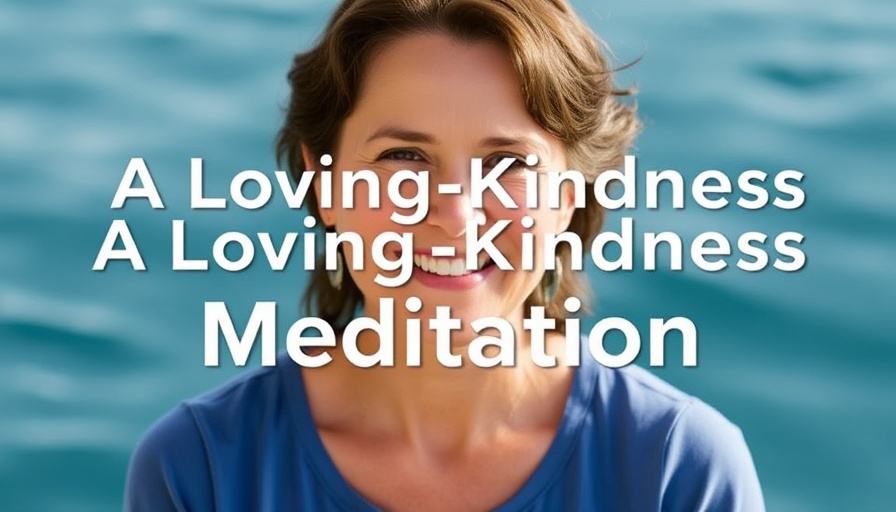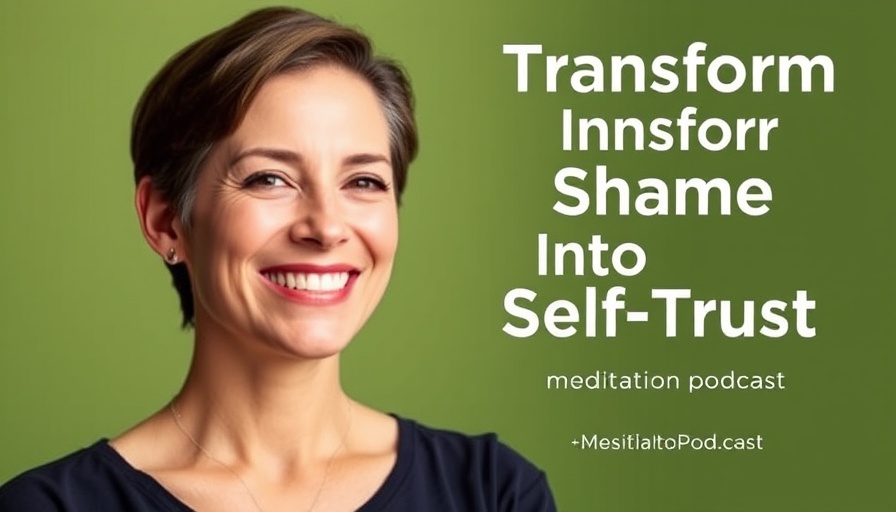
The Transformative Power of Loving-Kindness Meditation
In our fast-paced modern world, compassion can sometimes feel like a distant concept—yet cultivating it is essential for our emotional well-being and interpersonal relationships. Loving-kindness meditation, or metta meditation, offers a pathway to foster this much-needed trait. By taking just a few minutes daily to practice, individuals can renew their emotional intelligence and enhance their connections with others.
Why Loving-Kindness Matters in Today’s Society
Compassion is not only a personal benefit—it has a ripple effect on our communities. When we cultivate loving-kindness, we mend relationships and develop a sense of belonging. Studies indicate that practicing loving-kindness regularly can diminish feelings of isolation and promote a sense of social connection. As we extend compassion towards ourselves and others, we benefit from resilience against stress and conflict, integral to maintaining mental health in tumultuous times.
Your Guide to Practicing Loving-Kindness Meditation
Engaging in loving-kindness meditation requires no special equipment or setting—just a quiet space and a willingness to open your heart. Begin by closing your eyes and relaxing your body, taking a deep breath to ground yourself. Picture someone who cherishes you, allowing their love and warmth to surround you. With each inhale, embrace their good wishes for your happiness, health, and safety. With every exhale, reciprocate this love, sending kind thoughts back to them. This exchange forms a basis for deepening emotional bonds, which is incredibly valuable in maintaining healthy relationships.
Expanding Your Circle of Compassion
Once you've connected with those closest to you, cultivate loving-kindness toward neutral individuals—people with whom you may not have a relationship. This could be someone from your neighborhood or a colleague. Even if your personal connection is minimal, recognizing their humanity with wishes for their happiness fosters a benign atmosphere in your community.
Beyond Friends and Acquaintances: Compassion for Difficult People
One of the more challenging aspects of practicing loving-kindness is extending this compassion toward those we find difficult or challenging. It might feel unnatural to wish well for those who cause us stress, yet doing so can lead to personal growth. Imagine sending your warm wishes to a challenging colleague or a distant family member. Engaging in this practice can alleviate tensions and ultimately lead to forgiving and understanding these relationships.
Practical Insights for Incorporating Meditation into Daily Life
To derive consistent benefits from loving-kindness meditation, consider integrating it into your daily routine. Here are some strategies:
- Set aside time: Aim for a 15-minute window each day, either first thing in the morning or later in the evening. Building a routine can enhance your practice.
- Join a community: Engage with others who practice mindfulness in yoga sessions or meditation groups. This shared experience can amplify your growth.
- Use visuals: Enlist imagery or inspirational quotes around you that remind you to practice compassion, promoting mindfulness in your environment.
The Future of Mindfulness in Daily Life
As we continue facing a world filled with challenges, the future of mindfulness is promising. More practitioners are turning towards meditation to enhance their mental health, and with platforms offering guided meditations, accessing these practices is easier than ever. With the growing appreciation for mental wellness, mindfulness in yoga is on the rise, encouraging a holistic approach to well-being.
Ultimately, the practice of loving-kindness meditation reaffirms our interconnectedness, nurturing a world that embraces compassion and understanding. As you begin your journey into this practice, remember that the benefits may extend far beyond yourself, positively impacting the world around you.
Now, take a moment to consider how you can foster compassion in your daily life. Start your meditation practice today and become part of the positive change you wish to see.
 Add Row
Add Row  Add
Add 




Write A Comment